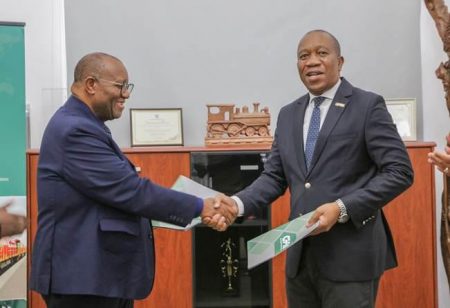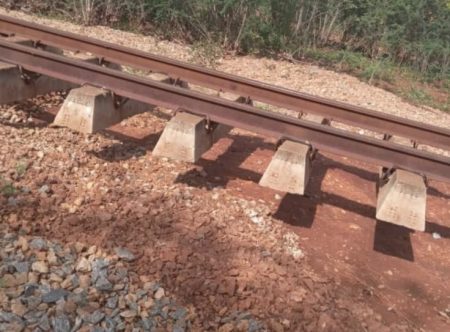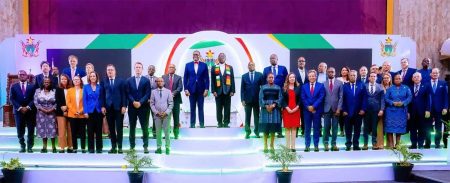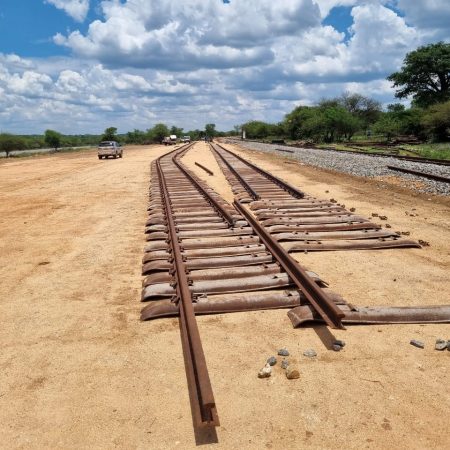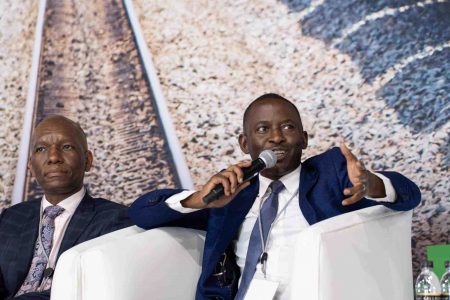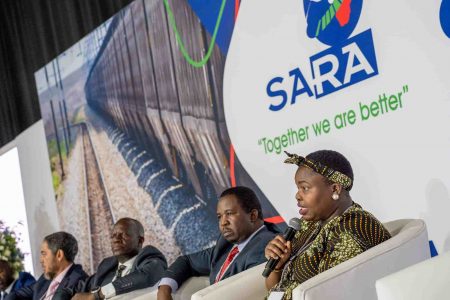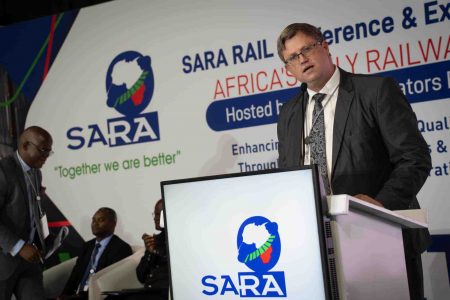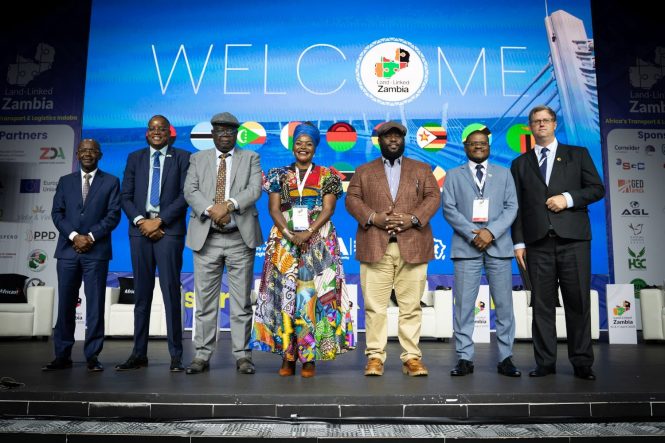
Minister of Transport and Logistics of Zambia, Frank Tayali, has said Africa needs to leverage railway infrastructure if it is going to stand a chance to compete on the global stage. He expressed happiness that there appears to be a paradigm shift, with both governments and the private sector working together to invest in transport infrastructure on the continent.
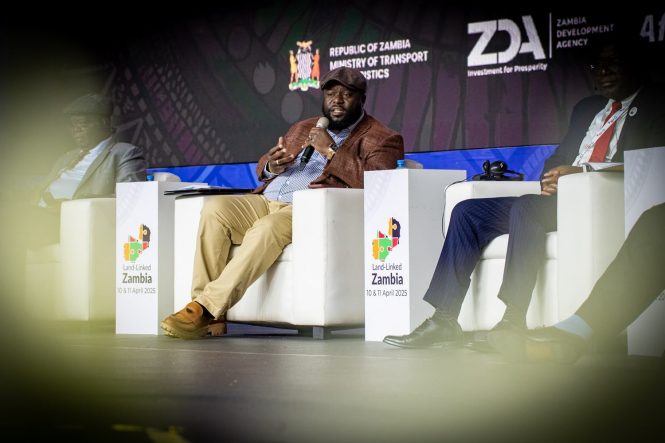
In terms of railway standards, Tayali said there is a need for countries in Southern and Eastern Africa to adopt the standard gauge as opposed to using the Cape gauge. He said Tanzania was moving to the standard gauge while countries like Zambia, Zimbabwe, Botswana and South Africa are still using the Cape gauge. He said these countries must make a hard decision and adopt the standard gauge.
He said at the Land-Linked Zambia 2025 that improving railway infrastructure will lower the cost of doing business, giving Africa a chance of competing on the global stage.
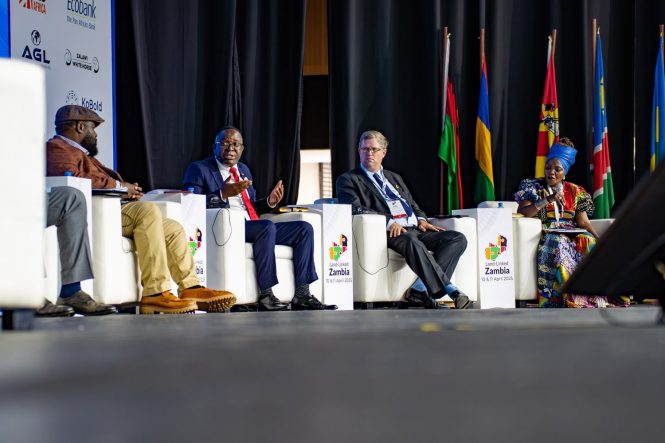
Baba Steven Malondera, Deputy Minister of Transport and Public Works, noted that the presidents of Malawi, Zambia, and Mozambique have already expressed commitment to the development and expansion of the Nacala Corridor.
Malondera said Malawi has had a policy shift and is moving towards the transportation of goods via rail as opposed to road, and has invested in the rehabilitation of railway infrastructure. He said the railway line on the Nacala route has been extended to Muchinji on the border with Zambia. He said Malawi was waiting for Zambia to connect the railway line from Chipata, giving it a possibility of reaching the Zambian capital, Lusaka, and thereby connecting Zambia to Mozambique via the Nacala Corridor.
But Malondera said that without clear timelines and commitments, railway projects in the region will remain at the feasibility study level, saying that some have remained at this level for up to 10 years. He, however, said Malawi was committed to working with its neighbours, Zambia, Tanzania and Mozambique, to improve transport infrastructure linking the countries.
Tayali said there is a possibility of extending the railway line from Chipata to Serenje in central Zambia to link up with the TAZARA Railway. He said Zambia has held discussions with officials of Nacala Logistics to extend the line into Zambia, while another group of investors want to extend it all the way to Serenje.
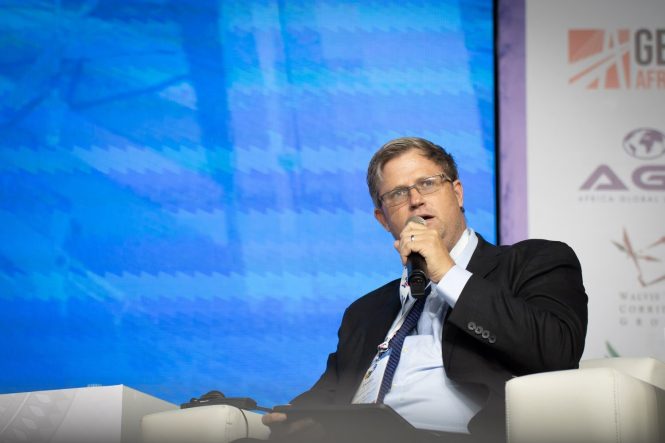
Joshua Sacco, the Deputy Minister of Transport and Infrastructure Development of Zimbabwe, said Zimbabwe has realised the importance of rail after recognising that its road network was now receiving extremely heavy loads from traffic, freight from the Democratic Republic of the Congo and through to the Beira Corridor to the port of Beira.
Sacco said Zimbabwe has now realised the need to move with speed to railway transportation because the amount of traffic that it has on roads is not sustainable, resulting in congestion, high road accidents and other negative impacts.
Zimbabwe is working towards collaboration with Botswana, Mozambique, Zambia, and South Africa to upgrade railway infrastructure.
With Zambia, Sacco said Zimbabwe plans a railway link between Kafue outside Lusaka to Lion’s Den in Zimbabwe as part of attempts to move freight from road to rail. He said of interest to Zimbabwe is the development of the Ponta Techobanine Railway, a proposed railway corridor aimed at enhancing connectivity between Botswana, Zimbabwe, and Mozambique, and is part of a wider scheme to create a large deep-water port in Techobanine. The presidents of Botswana, Mozambique, and Zimbabwe have already signed an MoU, and a feasibility study is being undertaken, Sacco said.
The project is a 1700-kilometre corridor estimated to cost US$6.5 billion, and Sacco said this project will enable the movement of freight from Botswana through Zimbabwe to Mozambique and vice versa.
He said Zimbabwe is undergoing a mining boom with the production of steel in the Midlands, where currently the country is producing about 600,000 tonnes per annum, but ultimately Sacco said this can move to 3.5 million to ultimately five million tonnes per annum at full capacity. Sacco said, therefore, the rail link from Mvuma and Nyazura to link with the Beira Corridor is of utmost importance.
He said Zimbabwe has realised that the North-South Corridor needs to be worked on, amongst many other initiatives. He added that the private sector will play an important role in these initiatives. He cited the Beitbridge Bulawayo Railway as an example of the role the private sector can play in the railway industry.
The main business is the provision of bulk transport services over its 350-kilometre railroad link on the North-South Corridor, between Beitbridge and Bulawayo into the hinterland. Sacco said Zimbabwe is also opening up to open access on its railway network to allow private players to come on board. He said Zimbabwe has to open up the transport sector, especially rail, to allow for economic development.
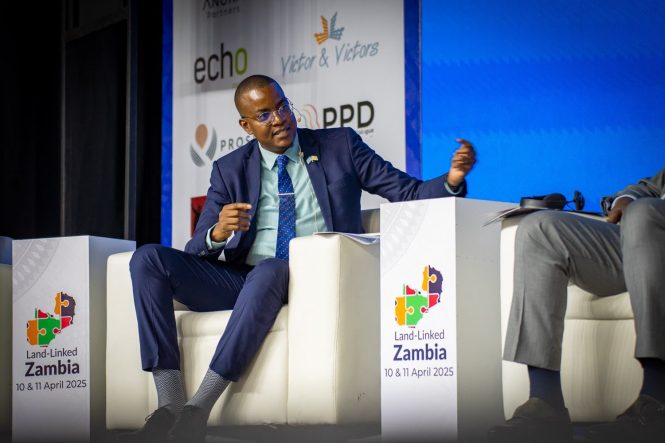
Assistant Minister of Transport and Infrastructure of Botswana, Keoagile Atamelang, said Botswana has identified four corridors to develop railway links with Namibia, South Africa, and Botswana. With Zimbabwe, the country is developing the Ponta Techobanine Railway, together with Mozambique. With South Africa, Botswana is developing the Mmamabula-Lephalale link that will run 113 km and have a capacity of 24 million tonnes a year.
Botswana has plans to develop the Mosetse–Kazungula–Livingstone Railway with Zambia, which is a planned 430-kilometre railway connecting the Botswana railway network at Mosetse, Botswana, with the Zambian railway network at Livingstone. Atamelang said SADC is experiencing a mineral boom. Every country has really great potential.

Minister of Transport of Tanzania, Makame Mbarawa, said Tanzania is positioning its railway network infrastructure as a backbone of regional logistics, enabling land-linked countries like Zambia, Burundi, the Democratic Republic of Congo, and Malawi to access the port of Dar es Salaam. He said Tanzania is heavily investing in transport infrastructure and aims to connect countries like Zambia, Malawi, Burundi, and the DRC.
He disclosed that Tanzania’s first major railway upgrade is the electrified, standard gauge railway at a cost of US$10.5 billion, divided into three phases.
The project will include the construction of a 411-kilometre railway line between Tabora and Kigoma. The project will connect Tanzania's port of Dar es Salaam on the Indian Ocean to the port of Mwanza on Lake Victoria. From there, it will extend to neighbouring Rwanda, Burundi, the Democratic Republic of Congo, and Uganda.
Tanzania is working with Zambia and China to revitalise TAZARA at a cost of US$1.4 billion, with US$1 billion going towards the rehabilitation of tracks and US$400 million going towards purchasing rolling stock.
